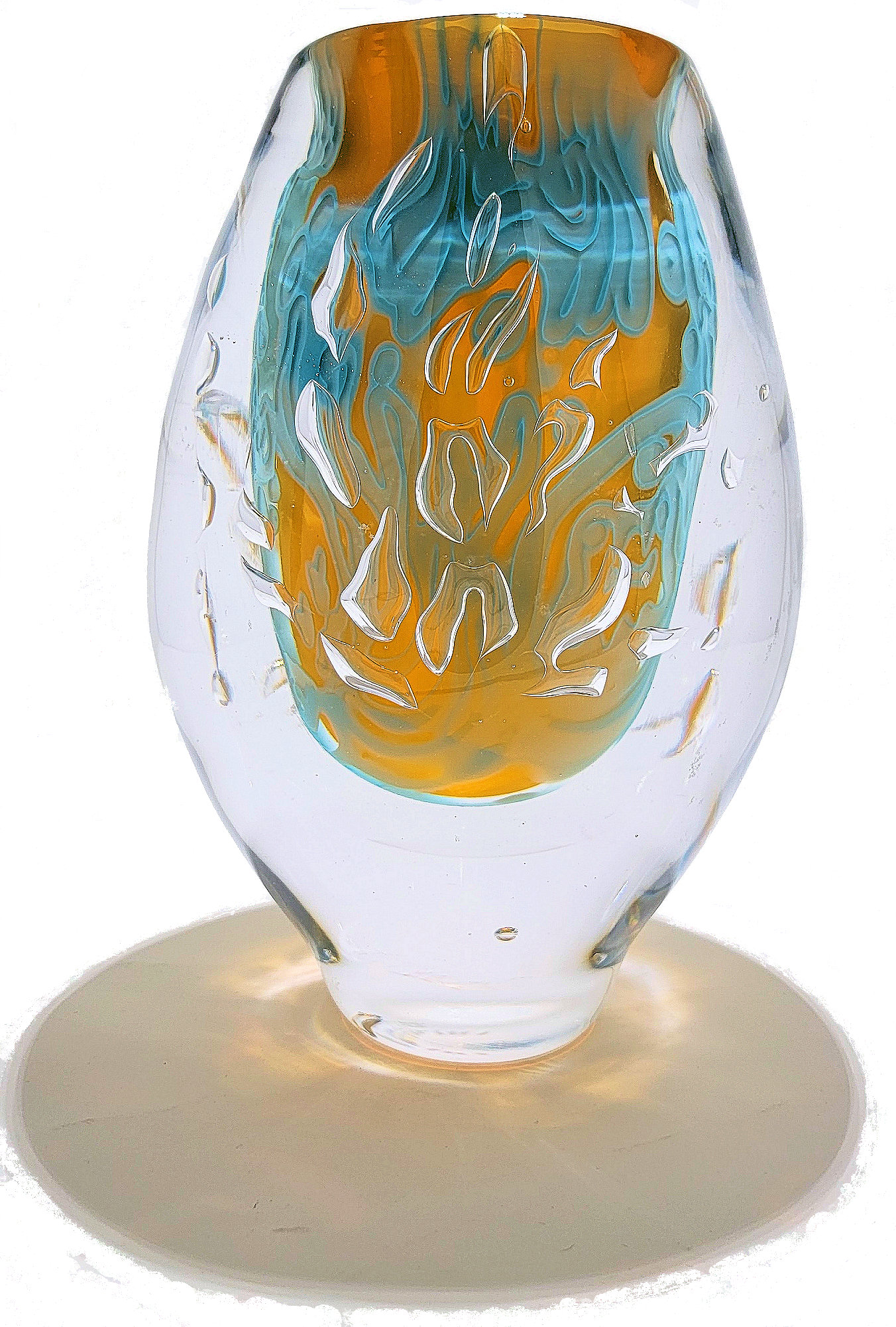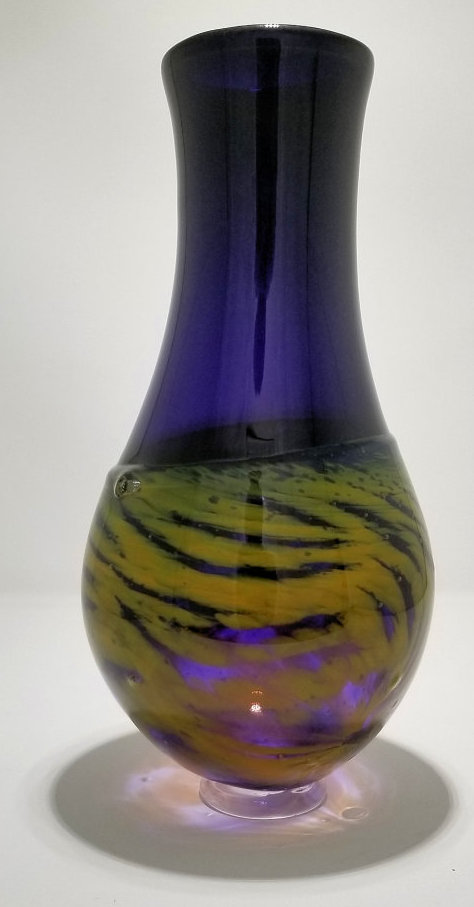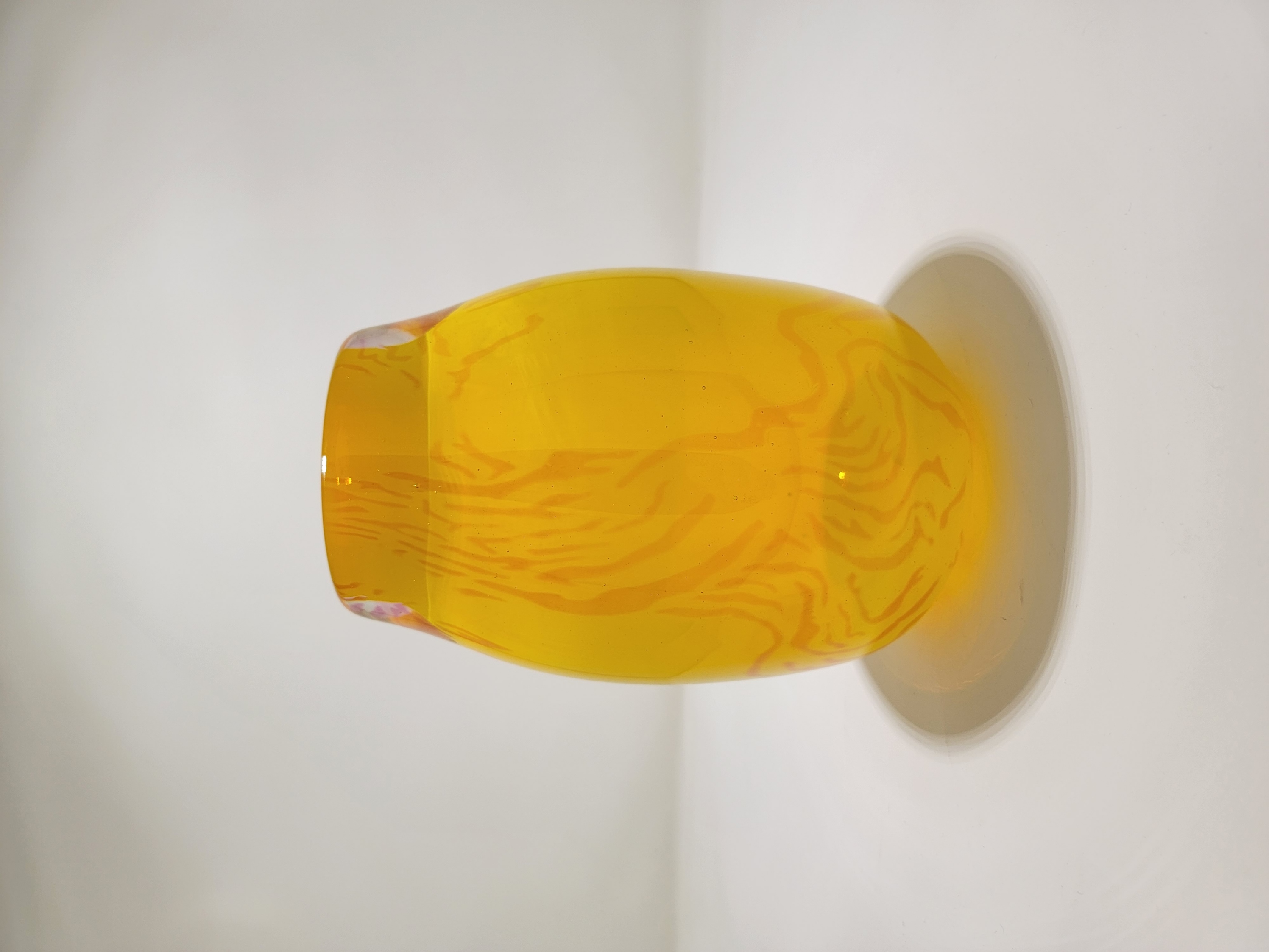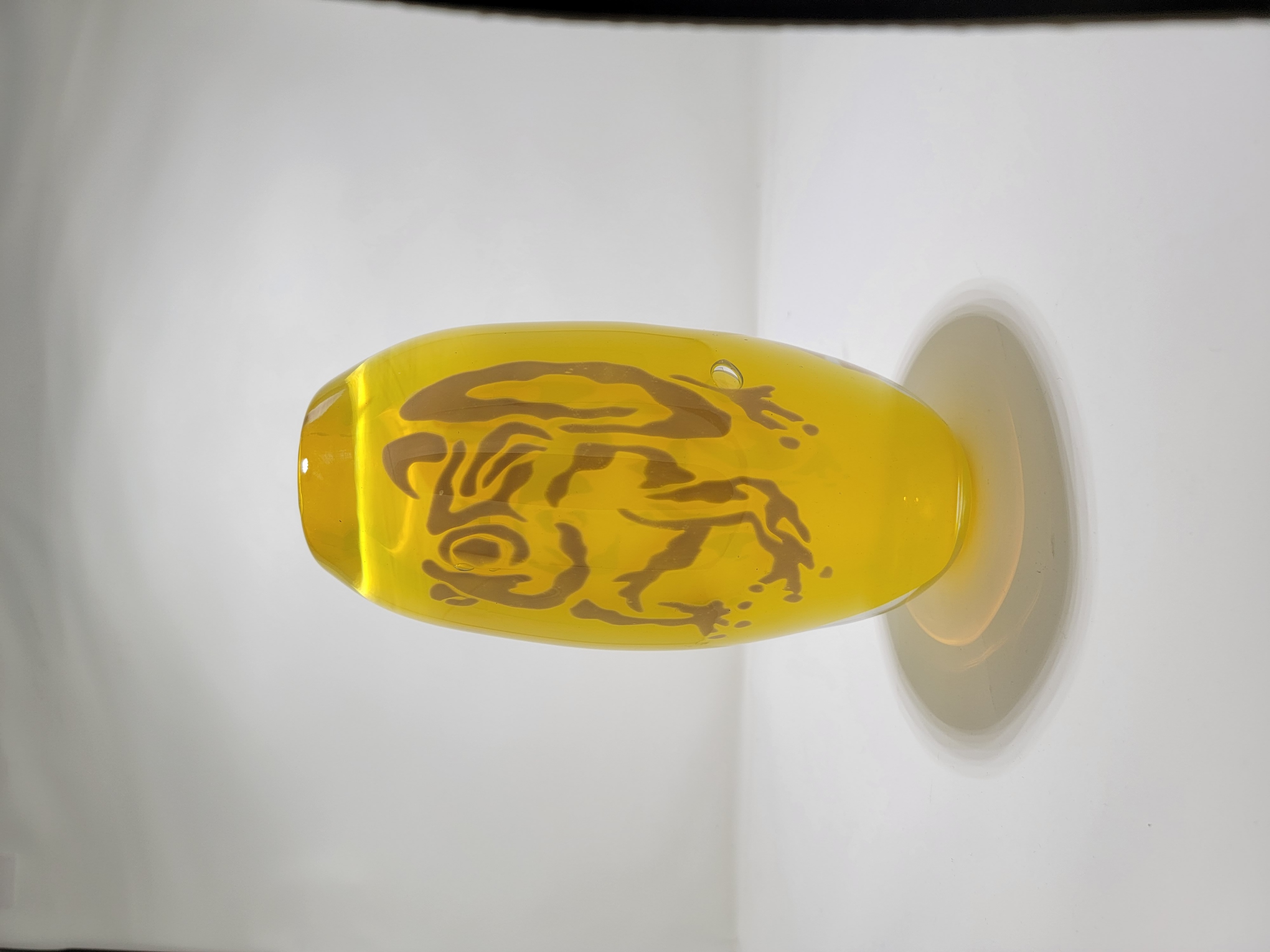
AD Glass & Design Glassblowing Studio and Gallery
Graal Series
Developed at the Orrefors of Sweden by Knut Bergkvist in 1916. The name graal was inspired by the saga of the Holy Graal which contains the blood of Christ. The first graal pieces were ruby red and had the aspect of a red liquid freely flowing in the vase. Hence, the analogy to the blood of Christ and the name Graal.
In the graal technique a colored layer of glass is encased by a transparent layer of glass. The glass is then allowed to cool down and when it is cold the design is applied by engraving or etching. The obtained “stock” of “blank” piece of glass is then carefully reheated and blown into its final shape. During this process the sharp edges of the design become smooth and the motive becomes more soft and blurred, giving it its typical Graal aspect. The ability to layer different colors and manipulate the shape of the glass allows for endless possibilities in creating unique and visually stunning pieces.
| |
|



